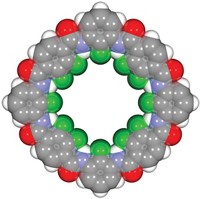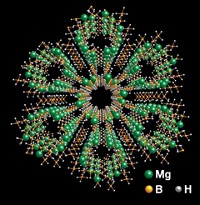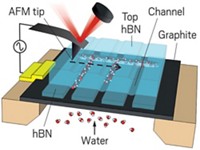Advertisement
Grab your lab coat. Let's get started
Welcome!
Welcome!
Create an account below to get 6 C&EN articles per month, receive newsletters and more - all free.
It seems this is your first time logging in online. Please enter the following information to continue.
As an ACS member you automatically get access to this site. All we need is few more details to create your reading experience.
Not you? Sign in with a different account.
Not you? Sign in with a different account.
ERROR 1
ERROR 1
ERROR 2
ERROR 2
ERROR 2
ERROR 2
ERROR 2
Password and Confirm password must match.
If you have an ACS member number, please enter it here so we can link this account to your membership. (optional)
ERROR 2
ACS values your privacy. By submitting your information, you are gaining access to C&EN and subscribing to our weekly newsletter. We use the information you provide to make your reading experience better, and we will never sell your data to third party members.
Materials
Nanotube Speedway
Gas and water zoom through the carbon nanotube pores of a membrane
by Bethany Halford
May 22, 2006
| A version of this story appeared in
Volume 84, Issue 21
With their atomically smooth surfaces, carbon nanotubes can act like a Slip 'n Slide for gases and water, hastening the molecules through the nanotube's channel at speeds far greater than would be expected from classical models of transport. At least that's what theorists said. Now a group of researchers at Lawrence Livermore National Laboratory (LLNL) has demonstrated this phenomenon experimentally (Science 2006, 312, 1034).
Olgica Bakajin, Aleksandr Noy, Jason K. Holt, Hyung Gyu Park, and colleagues have determined the speed with which gas and water molecules travel through double-walled carbon nanotube pores in a silicon nitride membrane. The nanotubes measure less than 2 nm in diameter, or roughly six water molecules across.
"The gas and water flows that we measured are 100 to 10,000 times faster than what classical models predict," Bakajin says. The permeability of the silicon nitride membrane is several orders of magnitude higher than those of commercial polycarbonate membranes, despite the fact that its pores are an order of magnitude smaller. "This is like having a garden hose that can deliver as much water in the same amount of time as a fire hose that is 10 times larger," Bakajin explains. "It's a unique nanoscale phenomenon."

When the LLNL researchers first set up an experiment with water and the membrane, they left it overnight, thinking that water would not permeate the membrane. "Since water does not wet the outside surface of carbon nanotubes, we were skeptical that water would enter them, let alone flow really fast," Bakajin says. "But the molecular dynamics simulations in the literature predicted fast flow, so we wanted to test the predictions." When they returned to the lab the next morning, they found a puddle beneath the membrane, demonstrating its permeability.
The researchers attribute the surprisingly fast transport to the nanotube's atomically smooth surface and to molecular interactions dictated by the nanotube's confined space. They are quick to point out, though, that further study is needed to determine the exact transport mechanisms.
In a commentary accompanying the Science paper, chemical engineering professors David S. Sholl of Carnegie Mellon University and J. Karl Johnson of the University of Pittsburgh call the report "a fascinating step toward the development of highly efficient membranes."
"These experiments show that carbon nanotube membranes can have spectacularly high fluxes, but to be useful as membranes, they must also show high selectivity," Scholl and Johnson note. "The experiments to date have only examined single-component transport, so no direct information on this crucial issue is available."
The membranes have potential applications in desalination, demineralization, and gas separations, such as removing oxygen from air. However, Sholl and Johnson point out that moving from elegant membranes to devices suitable for large-scale application will not be easy. "The scope of this challenge is large, but the payoff is commensurately large," they say.







Join the conversation
Contact the reporter
Submit a Letter to the Editor for publication
Engage with us on Twitter